SOURCE:
CDS
Part 30 of N Parts
https://bcvasundhra.blogspot.com/2019/11/cds-jointness-pla-part-central-theater.html
Part 29 of N Parts
https://bcvasundhra.blogspot.com/2019/11/part-29-cds-jointness-pla-strategic.html
Part 28 of N Parts
Part 27of N Parts
https://bcvasundhra.blogspot.com/2019/10/chinas-future-naval-base-in-cambodia.html
Part 26 of N Parts
https://bcvasundhra.blogspot.com/2019/10/part-26-cds-jointness-pla-n-strategic.html
Part 25 of N Parts
https://bcvasundhra.blogspot.com/2019/10/part-25-cds-jointness-pla-southern.html
Part 24 of N Parts
https://bcvasundhra.blogspot.com/2019/10/part-24-cds-jointness.html
Part 23 of N Parts
https://bcvasundhra.blogspot.com/2019/10/part-22-cds-jointness-pla-chinas-three.html
Part 22 of N Parts
https://bcvasundhra.blogspot.com/2019/05/peoples-liberation-army-deployment-in.html
Part 21 of N Parts
https://bcvasundhra.blogspot.com/2019/09/cds-part-9-cds-jointness-pla-part-x-of.html
Part 15 of N Parts
https://bcvasundhra.blogspot.com/2019/09/cds-part-10-pla-q-mtn-war-himalayan.html
Part 14 of N Parts
https://bcvasundhra.blogspot.com/2019/09/cds-jointness-pla-part-x-of-n-parts-new.html
Part 13 of N Parts
https://bcvasundhra.blogspot.com/2019/09/cda-jointness-pla-pla-system-of-systems.html
Part 12 of N Parts
https://bcvasundhra.blogspot.com/2019/09/part-12-cds-jointness-pla-military.html
Part 11 of N Parts
https://bcvasundhra.blogspot.com/2019/09/china-defense-white-papers1995.html
Part 10 of N Parts
https://bcvasundhra.blogspot.com/2019/09/part-10-cds-jointness-pla-series.html
Part 9 of N Parts
https://bcvasundhra.blogspot.com/2019/09/source-httpwww.html
Part 8 of N Parts
https://bcvasundhra.blogspot.com/2019/09/cda-part-goldwater-nichols-department.html
Part 7 of N Parts
https://bcvasundhra.blogspot.com/2019/08/cds-part-6-chief-of-defence-staff-needs.html
Part 6 of N Parts:
https://bcvasundhra.blogspot.com/2019/08/the-constitutional-provisions-for.html
Part 5 of N Parts:
https://bcvasundhra.blogspot.com/2019/08/part-4-cds-or-gateway-to-institutional.html
Part 4 of N Parts:
https://bcvasundhra.blogspot.com/2019/08/cds-part-3-chief-of-defence-staff.html
Part 3 of N Parts:
https://bcvasundhra.blogspot.com/2019/08/fighting-separately-jointness-and-civil.html
Part 2 of N Parts:
https://bcvasundhra.blogspot.com/2019/08/jointness-in-strategic-capabilities-can.html
Part 1 of N Parts
https://bcvasundhra.blogspot.com/2019/09/cds-part-zero-cds-explained-what-is.html
PART 16 TO PART 20
RESERVED FOR
FREQUENT AMENDMENTS
TO
ORBAT OF PLA DUE
TO MODERNIZATION
CDS
Part 30 of N Parts
https://bcvasundhra.blogspot.com/2019/11/cds-jointness-pla-part-central-theater.html
Part 29 of N Parts
https://bcvasundhra.blogspot.com/2019/11/part-29-cds-jointness-pla-strategic.html
Part 28 of N Parts
Part 27of N Parts
https://bcvasundhra.blogspot.com/2019/10/chinas-future-naval-base-in-cambodia.html
Part 26 of N Parts
https://bcvasundhra.blogspot.com/2019/10/part-26-cds-jointness-pla-n-strategic.html
Part 25 of N Parts
https://bcvasundhra.blogspot.com/2019/10/part-25-cds-jointness-pla-southern.html
Part 24 of N Parts
https://bcvasundhra.blogspot.com/2019/10/part-24-cds-jointness.html
Part 23 of N Parts
https://bcvasundhra.blogspot.com/2019/10/part-22-cds-jointness-pla-chinas-three.html
Part 22 of N Parts
https://bcvasundhra.blogspot.com/2019/05/peoples-liberation-army-deployment-in.html
Part 21 of N Parts
https://bcvasundhra.blogspot.com/2019/09/cds-part-9-cds-jointness-pla-part-x-of.html
Part 16 TO Part 20 of N Parts
https://bcvasundhra.blogspot.com/2019/10/part-16-to-part-20-cds-jointness-list.htmlPart 15 of N Parts
https://bcvasundhra.blogspot.com/2019/09/cds-part-10-pla-q-mtn-war-himalayan.html
Part 14 of N Parts
https://bcvasundhra.blogspot.com/2019/09/cds-jointness-pla-part-x-of-n-parts-new.html
Part 13 of N Parts
https://bcvasundhra.blogspot.com/2019/09/cda-jointness-pla-pla-system-of-systems.html
Part 12 of N Parts
https://bcvasundhra.blogspot.com/2019/09/part-12-cds-jointness-pla-military.html
Part 11 of N Parts
https://bcvasundhra.blogspot.com/2019/09/china-defense-white-papers1995.html
Part 10 of N Parts
https://bcvasundhra.blogspot.com/2019/09/part-10-cds-jointness-pla-series.html
Part 9 of N Parts
https://bcvasundhra.blogspot.com/2019/09/source-httpwww.html
Part 8 of N Parts
https://bcvasundhra.blogspot.com/2019/09/cda-part-goldwater-nichols-department.html
Part 7 of N Parts
https://bcvasundhra.blogspot.com/2019/08/cds-part-6-chief-of-defence-staff-needs.html
Part 6 of N Parts:
https://bcvasundhra.blogspot.com/2019/08/the-constitutional-provisions-for.html
https://bcvasundhra.blogspot.com/2019/08/part-4-cds-or-gateway-to-institutional.html
Part 4 of N Parts:
https://bcvasundhra.blogspot.com/2019/08/cds-part-3-chief-of-defence-staff.html
https://bcvasundhra.blogspot.com/2019/08/fighting-separately-jointness-and-civil.html
Part 2 of N Parts:
https://bcvasundhra.blogspot.com/2019/08/jointness-in-strategic-capabilities-can.html
Part 1 of N Parts
PART 16 TO PART 20 CDS & JOINTNESS List of Divisions of the People's Liberation Army
PART 16 TO PART 20
RESERVED FOR
FREQUENT AMENDMENTS
TO
ORBAT OF PLA DUE
TO MODERNIZATION
PART 16
SOURCE:
List of Divisions of the People's Liberation Army
From
Wikipedia, the free encyclopedia
[ READ ALSO : https://en.wikipedia.org/wiki/China ]
The People's Liberation Army of the People's Republic of China has had many divisions since it was officially established in 1949.
Contents
Infantry Divisions
- 1st Amphibious Mechanized Infantry Division – 1st Group Army, Nanjing Military Region. Listed in Federation of American Scientists (FAS).[1]
- 2nd Infantry Division – division transferred to the People's Armed Police to become the 8690 Unit (often referred to as the 2nd Armed Police Mobile Division) in the 1990s.[2]
- 3rd Division (1st Formation) of the 1st Group Army was deactivated in 1952.
- 3rd Division (2nd Formation) was formed in May 1969 and now active as 7th Armed Police Mobile Division.
- 3rd Division (3rd Formation) was renamed from the 7th Division in December 1969 and is now active as 3rd Motorized Infantry Brigade.
- 4th Division – Xinjiang Military District, Lanzhou Military Region - (Jane's Sentinel p. 91)
- 5th Division (1st Formation) is now the 5th Xinjiang Agriculture Construction Division.
- 5th Division (2nd Formation) was reduced to a brigade in 1985.
- 6th Division (1st Formation) is now 2nd Xinjiang Agriculture Construction Division.
- 6th Division (2nd Formation) – Lanzhou Military Region.[3]
- 7th Division (1st Formation) is now 3rd Motorized Infantry Brigade.
- 7th Division (2nd Formation) is now the 7th Armed Police Mobile Division.
- 8th Division (1st Formation) was disbanded in 1952 when the 3rd Corps was merged into the 1st Corps.
- 8th Division (2nd Formation) was formed in 1969 from 1st Cavalry Division. It's now 8th Motorized Infantry Division.
- 9th Division - disbanded in 1952.
- 10th Division - disbanded in 1952.
- 11th Motorized Infantry Division - Western Theater Command, formerly Lanzhou MR. Military district.
- 12th Division
- 13th Division
- 14th Division
- 15th Division
- 16th Division
- 17th Division
- 18th Division
- 19th Division
- 20th Division First formation 1949-50, became 7th Artillery Training Base. Reformed.
- 21st Division
- 22nd Division
- 23rd Division
- 24th Division
- 25th Division - In May 1953, the 25th, 26th and 27th Divisions of the 9th Corps were reorganized as 7th, 8th and 9th Agriculture Construction Division of the Xinjiang Production and Construction Corps, respectively.
- 26th Division
- 27th Division
- 28th Division - 28th Army Division to 1969. Then redesignated 205th Division.
- 29th Division – with 15th Army served in Korean War. Now as 56th Motorized Infantry Brigade.
- 30th Division (1st Formation)(People's Republic of China)
- 30th Infantry Division (2nd Formation)(People's Republic of China)
- 30th Army Division (3rd Formation)(People's Republic of China)
- 31st Division – with 11th Army during Sino-Vietnamese War. Chengdu MR JSENT p. 91. First formation became the 36th Motorized Infantry Brigade (People's Republic of China). Second formation remains the 31st Motorized Infantry Division (People's Republic of China).
- 32nd Division – with 11th Army during Sino-Vietnamese border conflict.
- 33rd Division – Served in the Korean War as the 33rd Independent Division. Second Formation was 33rd Army Division (2nd Formation)(People's Republic of China) from 1979-85.
- 34th Division – 12th Army with 31st, 34th, and 35th Divisions entered Korea on March 25, 1951.[4] Routed during the Battle of the Soyang River.[5]
- 35th Division
- 36th Division
- 37th Division – with 13th Army during Sino-Vietnamese border conflict
- 38th Division – with 13th Army during Sino-Vietnamese border conflict
- 39th Division – with 13th Army during Sino-Vietnamese border conflict
- 40th Division – 14th Group Army - Chengdu MR. Served in S-V War with 14th Army (People's Republic of China). JSENT p. 91.
- 41st Division – served in Sino-Vietnamese War with 14th Army.
- 42nd Division – served in Sino-Vietnamese War with 14th Army.
- 43rd Division - formed 1949, disbanded 1950.
- 43rd Airborne Division – 89th Division (People's Republic of China) reorganised as an airborne formation, renumbered, now airborne with 15th Airborne Army.
- 44th Airborne Division – now airborne with 15th Airborne Army. Served in Korea War. Entered Korea with 15th Army in February 1951.[4]
- 45th Airborne Division – now airborne with 15th Airborne Army. Served in Korea War. Entered Korea with 15th Army in February 1951.[4]
- 46th Division
- 47th Infantry Division
- 48th Infantry Division
- 49th Division
- 50th Division
- 51st Division Formed twice. Second formation became the Independent Division of Hubei Provincial Military District.
- 52nd Division Formed three times. Second formation became the 149th Motorized Infantry Division. Third formation became the 52nd Mountain Motorized Infantry Brigade.
- 53rd Division. Formed twice. Second formation became 53rd Mountain Motorized Infantry Brigade.
- 54th Division
- 55th Division. Originally 19th Corps. 19th Corps was in 1969 at Wuwei, Gansu with the 55th, 56th, and 57th Divisions.
- 56th Division
- 57th Division. Formed twice. First formation became 1st Fossil Oil Engineer Division. 57th Division (Second Formation).
- 58th Division – 20th Group Army, but commanded by the 50th Army during the Sino-Vietnamese War. Converted to a brigade in 1999.
- 59th Division – Component of 20th Army during Korean War. Disbanded 1985.[6]
- 60th Division
- 61st Division – 21st Army served in Korea War. Now 21st Group Army, Shaanxi Province. JSENT p. 90 Listed FAS, 21st GA
- 62nd Division – 21st Army served in Korea War.
- 63rd Division – 21st Army served in Korea War.
- 64th Division
- 65th Division
- 66th Division
- 67th Motorised Infantry Brigade, 23rd Group Army, 'demobilised' during 2003 reductions cycle (Blasko 2006, 77). With 23rd Army in Korea.
- 68th Division – subordinate to Shenyang MR. Now 68th Motorized Infantry Brigade, Qiqihar, Heilongjiang (from 23rd Group Army).[7]
- 69th Division – Shenyang MR. JSENT p. 91 Listed FAS. With 23rd Army in Korea. Now 69th Motorized Infantry Division, Harbin, Heilongjiang (from 23rd Group Army).[7]
- 70th Division – served with 24th Army in Korea. Now 3rd Guard Division.
- 71st Division. Disbanded. 71st Division formed later.
- 72nd Division – with 24th Army served in Korea War.
- 73rd Division – with 23rd Army served in Korea War.
- 74th Division – with 24th Army served in Korea War.
- 75th Division
- 76th Division
- 77th Division – 26th Army served in Korea War
- 78th Division – 26th Army served in Korea War
- 79th Division – 27th Army
- 80th Division – 27th Army
- 81st Division – 27th Army
- 82nd Division
- 83rd Division
- 84th Division
- 85th Division
- 86th Division – 31st Army. Second formation 86th Motorized Infantry Division (People's Republic of China) – 26th Army served in Korea War
- 87th Division
- 88th Division – 26th Army served in Korea War
- 89th Division – operating with 20th Army in Korea. Disband in February 1951.[8]
- 90th Division
- 91st Division – 31st Army
- 92nd Infantry Division – 31st Army
- 93rd Infantry Division – 31st Army
- 94th Division – with 27th Army served in Korea War. Disbanded in February 1951.[8]
- 95th Division - In October 1950 32nd Corps was disbanded and the division was absorbed into the Air Force. On February 14, 1951, the division was reorganized and renamed as 14th Aviation Division.
- 96th Division
- 97th Division
- 105th Division
- 106th Division – 36th Army - Airfield construction labor during Korean War
- 107th Division
- 108th Division
- 109th Division – 37th Army - Airfield construction labor during Korean War
- 110th Division
- 111th Division
- 112th Division – 38th Army
- 113th Division – 38th Group Army
- 114th Division (People's Republic of China) - 38th Group Army
- 115th Division – 39th Army
- 116th Division
- 117th Division
- 118th Division - Part of 40th Army. 40th Army entered Korea on October 19, 1950 and was the first Chinese formation to make contact with UN forces in Korea.[9][10]
- 119th Division
- 120th Division
- 121st Division – 41st Army during Sino-Vietnamese War
- 122nd Division – 41st Army during Sino-Vietnamese War
- 123rd Division – 41st Army during Sino-Vietnamese War
- 124th Division – 42nd Army during Korean War and Sino-Vietnamese War
- 125th Division – 42nd Army during Korean War and Sino-Vietnamese War
- 126th Division – 42nd Army during Korean War and Sino-Vietnamese War
- 127th Division – fought in Korean War and with 43rd Army during Sino-Vietnamese border conflict
- 128th Division – with 43rd Army during Sino-Vietnamese border conflict
- 129th Division – with 43rd Army during Sino-Vietnamese border conflict
- 130th Division
- 131st Division
- 132nd Division- with 43rd and 44th Corps/Armies in the 1950s. Now on Hainan Island as 132nd Mechanized Infantry Brigade since 2003.
- 137th Division (People's Republic of China)137th Division
- 138th Division - probably originally with 46th Army. 1949-1953 disbanded and reorganised as PLAAF Second Aviation School.[11]
- 139th Division – 47th Group Army, Lanzhou Military Region[3]
- 140th Division
- 141st Division
- 148th Division – 50th Army Entered Korea on October 26, 1950.[12] Fought with 50th Army during Sino-Vietnamese border conflict.
- 149th Division – 13th GA - Suchuan Prov JSENT p. 90 Listed FAS, 13th GA. Belonged to 50th Army while it fought in Sino-Vietnamese border conflict
- 150th Division – 50th Army - Fought with 50th Army during Sino-Vietnamese border conflict.
- 153rd Division
- 154th Division
- 155th Division
- 156th Division - disbanded June 1949, Korean troops to 7th Division, KPA.
- 157th Division
- 158th Division
- 159th Division
- 160th Division – 54th Army, Sino-Vietnamese border conflict
- 161st Division – 54th Army, Sino-Vietnamese border conflict
- 162nd Division – 54th Group Army, Sino-Vietnamese border conflict - Jinan MR; JSENT p. 90.
- 163rd Division – with 55th Army during Sino-Vietnamese border conflict
- 164th Division – 164th Division (1st Formation)(People's Republic of China) became 5th Division, KPA, 1949. Reformed twice. With 55th Army during Sino-Vietnamese War.
- 165th Division – with 55th Army during Sino-Vietnamese border conflict
- 167th Division – possibly existed under 56th Army according to US intelligence during the Korean War.[13]
- 179th Division – 12th Group Army; fought in Korean War under 60th Army
- 180th Division – fought in Korean War under 60th Army.
- 181st Division – fought in Korean War under 60th Army
- 187th Division – 63rd Army during Korean War
- 188th Division – 63rd Army served in Korea War. Now Beijing Military Region.[3]
- 189th Division – 63rd Army served in Korea War. 189th Infantry Division (1985–98), then reduced to 189th Motorized Infantry Brigade (1998-2003). Disbanded 2003.
- 190th Division – 64th Army served in Korea War. Listed by Blasko as with 39th Army, 2006.
- 191st Division
- 192nd Division – listed by Blasko 2006 as the 'Liaoning Army Reserve 192nd Infantry Division, Shenyang,' Shenyang MR[14]
- 193rd Division – 65th Army during Korean War. Entered Korea on February 23, 1951.[15] Decimated during the Battle of the Imjin River.[16]
- 194th Infantry Division (People's Republic of China)
- 195th Infantry Division (People's Republic of China)
- 196th Division – 66th Army Entered Korea on October 27, 1950.[17] Served in Korea War
- 197th Division
- 198th Division – 66th Army
- 199th Division – 67th Army served in Korea War. 67th Army left Korea in September 1954.[18]
- 200th Division – 67th Army served in Korea War
- 201st Division – 67th Army served in Korea War
- 202nd Division – 68th Army served in Korea War. 68th Army left Korea in April 1955.[18]
- 203rd Division – 68th Army served in Korea War
- 204th Division – 68th Army served in Korea War.
- 205th Division
- 205th (II)
- 206th (I)
- 206th (II)
- 207th (I)
- 207th (II)
- 207th (III)
- 207th (IV)
- 208th
- 209th (I)
- 209th (II)
- 210th (I)
- 210th (II)
- 211th Division
- 212th Division
- 213th Division
- 214th Division
- 215th
- 216th Division
- 217th Division - 1949-1952; deactivated to provide replacements for the People's Volunteer Army in Korea.
- 218th Division Active until October 1950 as part of 53rd Corps (People's Republic of China).
- 219th Infantry Division. Formed from 164th Division. Active 1952-60 and then 1960-70 as 219th Army Division, part of 55th Corps (People's Republic of China).
- 220th
- 250th
Armored Divisions[edit]
- 1st Armoured Division - belong to Beijing MR[19]
- 2nd Armored Brigade (People's Republic of China) - with 12th Group Army, Nanjing Military Region[20]
- 3rd Armoured Division - with 39th Group Army,[21]
- 4th Armoured Division (1998-2011), now 4th Armored Brigade
- 5th Tank Division (People's Republic of China) 1967-98
- 6th Armored Division (People's Republic of China)
- 8th Tank Division from 1967–98; Armored Division 1998-2011, 8th Armored Brigade from 2011.
- 10th
- 11th
- 12th
Artillery Divisions[edit]
- 1st Artillery Division[23]
- 2nd Artillery Division[23]
- 3rd Artillery Division[23]
- 7th Artillery Division[23]
- 8th Artillery Division[23]
- 9th Artillery Division (1st Group Army)
- 21st Rocket Artillery Division[23]
- 22nd Rocket Artillery Division[23]
- 31st Anti-Tank Artillery Division[24]
- 33rd Anti-Tank Artillery Division[23]
- 61st Anti-Aircraft Artillery Division[23]
- 62nd Anti-Aircraft Artillery Division[25]
- 63rd Anti-Aircraft Artillery Division[25]
- 64th Anti-Aircraft Artillery Division[25]
- 65th Anti-Aircraft Artillery Division[25]
- 70th Anti-Aircraft Artillery Division
- 102nd Anti-Aircraft Artillery Division[25]
Aviation Divisions[edit]
- 1st Fighter Division (People's Republic of China) Stationed at Anshan, Liaoning
- 2nd Fighter Division (People's Republic of China) Stationed at Suixi, Guangdong[26]
- 3rd Fighter Division (People's Republic of China) Stationed at Wuhu, Anhui[26]
- 4th Fighter Division (People's Republic of China)[26]
- 5th Aviation Division[26]
- 6th Fighter Division (People's Republic of China) Stationed at Yinchuan, Ningxia[26]
- 7th Fighter Division (People's Republic of China) Established December 1950 flying fighters, at Dongfeng, Jilin.[27] Stationed at Datong, Shanxi[26]
- 8th Aviation Division[26] Established in December 1950 flying bombers at Siping, Jilin.[28] Originally had 22nd and 24th Regiments. Scramble.nl, accessed mid 2015, indicates there are at least six regiments of H-6 bombers. All three regiments of the 8th Bomber Division fly the aircraft - the 22nd, 23rd (former 143rd Regt/48th Div), and 24th. On November 11, 1965, Li Xianbin (T:李顯斌, S:李显斌), a PLAAF captain of Ilyushin Il-28 of the 8th Aviation Division flew his bomber numbered 0195 from Jianqiao (T:筧橋, S:笕桥) air base in Hangzhou to Taoyuan County, Taiwan (now Taoyuan City), and this was the first fully operational Il-28 in western hands. The radio operator / tail gunner Lian Baosheng (廉保生) was found dead at the scene and the navigator Li Caiwang (李才旺) was captured alive after a suicide attempt. Both survivors were honored and rewarded positions in the Republic of China Air Force.
- 9th Aviation Division (People's Republic of China) Established in December 1950 as a fighter division at Jilin, Jilin.[28] Transferred to PLA Naval Aviation as 5th Naval Aviation Division in September 1955; reestablished at Ganzhou in March 1956. Stationed at Foshan, Guangdong[26]
- 10th Aviation Division Established at Nanjing, Jiangsu in January 1951 as a bomber-flying division.[28]
- 11th Aviation Division (People's Republic of China) Established in February 1951 as a ground-attack unit in Xuzhou, Jiangsu.[28] Stationed at Siping, Jilin[26]
- 12th Fighter Division (People's Republic of China) Established in Xiaoshan, Zhejiang in December 1950 as a fighter unit.[28] Stationed at Yantai, Shandong[26]
- 13th Aviation Division (People's Republic of China) Stationed at Wuhan, Hubei[26]
- 14th Fighter Division (People's Republic of China) Formed February 1951 at Beijing Nanyuan Airport[28] from elements of the disbanding 95th Division. Stationed at Nanchang, Jiangxi.[26] The division fought in Korea, as a mixed MiG-9/MiG-15 fighter unit.[26] Started its second combat tour in April 1953 and ceased combat in July 1953.[29] It appears that in September 1992 the 146th Regiment of the disbanding 49th Air Division may have become the 42nd Regiment.[30]
- 15th Fighter Division[26]
- 16th Aviation Division[31]
- 17th Aviation Division[31]
- 18th Aviation Division (People's Republic of China) Stationed at Nanning, Guangxi[31]
- 19th Aviation Division (People's Republic of China) Stationed at Zhengzhou, Henan[31] The 57th Regiment, 19th Air Division, at Lianyungang, was re-established from 2nd Regiment, Jinan MR Training Base, in 2010 with J11 after it had been previously disbanded in 1988.[32] However it became a regiment of the reformed 32nd Division in 2012.
- 21st Aviation Division (People's Republic of China) Stationed at Mudanjiang, Heilongjiang[31]
- 24th Fighter Division Stationed at Tianjin
- 28th Aviation Division Stationed at Hangzhou, Zhejiang[33]
- 29th Fighter Division Stationed at Hangzhou, Zhejiang
- 30th Fighter Division Stationed at Dandong, Liaoning
- 32nd Air Division In 2012 the 57th Regiment, 19th Division got subordinated to the re-formed 32nd Division as 95th Regiment.[32]
- 33rd Fighter Division Stationed at Chongqing
- 34th Transport Division Stationed at Beijing
- 36th Fighter Division Stationed at Xi'an, Shaanxi
- 37th Fighter Division Stationed at Ürümqi, Xinjiang
Engineering Divisions[edit]
- 1st Railway Engineer Division[25]
- 2nd Railway Engineer Division[25]
- 3rd Railway Engineer Division[25]
- 4th Railway Engineer Division[25]
- 5th Railway Engineer Division[25]
- 6th Railway Engineer Division[25]
- 7th Railway Engineer Division[25]
- 9th Railway Engineer Division[25]
- 10th Railway Engineer Division[25]
- 11th Railway Engineer Division[25]
- 52nd Engineer Division (People's Republic of China)
References[edit]
Citations[edit]
- ^ "People's Liberation Army". fas.org. Archived from the original on September 18, 2016. Retrieved August 18, 2016.
- ^ Dennis J. Blasko. "PLA Ground Forces: Moving Toward a Smaller, More Rapidly Deployable, Modern Combined Arms Force" The People's Liberation Army as Organization: Reference Volume v1.0, James C. Mulvenon and Andrew N. D. Yang eds. (Santa Monico: RAND; 2002)
- ^ a b c Jane's Sentinel, p. 91
- ^ a b c Hu & Ma 1987, p. 36.
- ^ Zhang 1995, p. 152.
- ^ PLA Order of Battle, Disbanded Divisions Archived 2007-08-07 at the Wayback Machine
- ^ a b Blasko, 2006, 76
- ^ a b Guang 2007, p. 93.
- ^ Zhang 1995, p. 94.
- ^ Ryan, Finkelstein & McDevitt 2003, p. 101
- ^ https://www.globalsecurity.org/military/library/report/1991/plaaf-appe.htm
- ^ Hu & Ma 1987, p. 7.
- ^ Appleman 1989, p. 45.
- ^ Blasko 2006, 76
- ^ Hu & Ma 1987, p. 39.
- ^ Chinese Military Science Academy 2000a, p. 318
- ^ Hu & Ma 1987, p. 8.
- ^ a b Zhang 1995, p. 270.
- ^ Hu & Ma 1987, p. 26.
- ^ Xinhui, I was asked to write something on the 2nd Armored Division Archived 2013-09-28 at the Wayback Machine, accessed June 2012
- ^ Hu & Ma 1987, p. 131.
- ^ IISS Military Balance 2012, 234.
- ^ a b c d e f g h i Hu & Ma 1987, pp. 187–190, 196–197.
- ^ Hu & Ma 1987, p. 130.
- ^ a b c d e f g h i j k l m n o Hu & Ma 1987, p. 185.
- ^ a b c d e f g h i j k l m n Zhang 2004, p. 215.
- ^ RAND 2002, 449.
- ^ a b c d e f RAND 2002, 450.
- ^ Zhang 2004, p. 225.
- ^ 空军航空兵第14师. "空军航空兵第14师_互动百科". www.baike.com. Archived from the original on 30 July 2017. Retrieved 25 April 2018.
- ^ a b c d e Zhang 2004, p. 216.
- ^ a b "Orbats - Scramble". www.scramble.nl. Archived from the original on 8 September 2017. Retrieved 25 April 2018.
- ^ 张积慧 (Zhang Jihui) (in Chinese), Rongcheng, China: Rongcheng People's Government, archived from the originalon July 7, 2011, retrieved July 12, 2010
Sources[edit]
- Appleman, Roy (1989), Disaster in Korea: The Chinese Confront MacArthur, 11, College Station, TX: Texas A and M University Military History Series, ISBN 978-1-60344-128-5
- Blasko, Dennis J. (2006). The Chinese Army Today: Tradition and Transformation for the 21st Century. London & New York: Routledge. ISBN 0-415-77003-3. xvii, 228 pp.
- Chinese Military Science Academy (2000a), 《抗美援朝战争史》 [History of War to Resist America and Aid Korea] (in Chinese), Volume II, Beijing: Chinese Military Science Academy Publishing House, ISBN 7-80137-392-8
- Guang, Ting (光亭) (2007), Dong, Min Jie (董旻杰) (ed.), 《冰血长津湖》 [Ice and Blood, Changjin Lake], Der Strum (突击) Magazine Korean War Special Issue (in Chinese) (1st ed.), Hohhot, Inner Mongolia: Inner Mongolian People's Publishing House (内蒙古人民出版社), ISBN 7-204-081668/E·18 Check
|isbn=value: invalid character (help) - Hu, Guang Zheng (胡光正); Ma, Shan Ying (马善营) (1987), 《中国人民志愿军序列》 [Chinese People's Volunteer Army Order of Battle] (in Chinese), Beijing: Chinese People's Liberation Army Publishing House, OCLC 298945765
- Ryan, Mark A.; Finkelstein, David M.; McDevitt, Michael A. (2003), Chinese Warfighting: The PLA Experience Since 1949, Armonk, NY: M.E. Sharpe, ISBN 0-7656-1087-6
- Zhang, Shu Guang (1995), Mao's Military Romanticism: China and the Korean War, 1950–1953, Lawrence, KS: University Press of Kansas, ISBN 0-7006-0723-4
- Zhang, Xiao Ming (2004), Red Wings Over the Yalu: China, the Soviet Union, and the Air War in Korea, College Station, TX: Texas A&M University Press, ISBN 1-58544-201-1
- Jane's Sentinel, China/North East Asia, June–Dec 2000.
External links[edit]
- Andrew Chan, PLA forces during the Sino-Vietnam clashes, Orbat.com, v.1.0 July 29, 2001.
- http://www.militaryobservation.info/across-the-vast-to-18-from-70-infantry-army-group-army/[permanent dead link]
SOURCE :
https://www.scramble.nl/orbats/china/summary
https://www.scramble.nl/orbats
ChinaHistory/Organisation

Other Forces
Air Force - Introduction
Army Aviation - Introduction
Naval Aviation - Introduction
Chinese Aircraft Types
Chinese Serial System

6 June 2016 the Xi'an (XAC) Y-20 was inducted into the Air Force..

With the J-20 and this J-31 China is currently testing two Next
Generation stealth fighter designs. Excavations have shown that the Homo Erectus lived in China about one million years ago. Airplane relevant history however started at 12 March 1912 when the almost 400 years of Qing Dynasty came to an end and a provisional government of the Republic of China was established in Nanjing. Effectively the country became ever more in the hands of Warlords, which was countered by the establishment of a Soviet assisted Communist Party of China (CPC). From 1925 the Nationalist Party (Kuomintang, KMT) seized control from the warlords in the South and Central China and from 1927 also ousted the Communist Party from this region. From 1934 the CPC started the Long March soon under the command of Mao Zedong.Although the two parties were at the same side fighting the Japanese invasion between 1931 and 1945, the CPC continued to force the Nationalists further south after the Sino-Japanese war had ended. In 1949 the remaining KMT forces under the command of Chiang Kai-Shek fled to Taiwan and the People's Republic of China was proclaimed on 1 October 1949 with Taiwan and some outlying islands of Fujian being regarded as rebellious provinces still to be conquered.Flying in the newborn Peoples Republic received a kick-start in 1951 in the Korean War with the Soviet Union delivering fighter and bomber aircraft including over 1000 MiG-15. Continued deliveries stopped abruptly in 1960. In this period production of aircraft came into full swing with about 780 J-5s (MiG-17) and over 3000 J-6s (MiG-19 versions) to name a few. Mid 60s "indigenous" designed aircraft like the J-7 (MiG-21 version), J-8 and Q-5 (MiG-19 derivative) saw the first light of day.One of the achievements of the Cultural Revolution (1966-1970) was that not only the armed forces lost all people with any education, but also that aircraft quality levels dropped to sub-zero standards and production of aircraft became out of the question. It lasted until the mid '80s until more advanced versions of existing aircraft types started to appear.The armed forces are in the midst of a massive modernization in which old airplanes are discarded in favour of modern ones on the basis of quality instead of quantity. In 1982 John Andrade in his book "Militair 1982" estimated the number of active aircraft at about 4750. Current estimates come close to 3200 that is also shown in the number of divisions that reduced from 50 in the heydays to about 32 nowadays. Major reductions were announced in 1982 and 1998 and also in 2004 further reductions were announced.The turn of the century saw a major replacement program where obsolete front-line aircraft were replaced by new generation derivatives like new J-7, J-8 and Q-5 versions. Also some Su-27/Su-30 aircraft were introduced. Only a few years later, by 2010, nearly all old generation fighters have gone and many Air Force and Navy regiments now fly modern fighters like J-10, JH-7A and J-11 derivatives, with new versions to come. In a suppprise move early January a new 5th Generation Fighter J-20 made its first flight. The bomber force is a decade away from flying the H-5 and is now flying modern H-6 aircraft, although the airframe is stll based on the vintage Tu-16.A Rapid Deployment Force is visible as many fighters now have in-flight tanking capability and starting 2014 the availability of Il-78 tanker aircraft complementing H-6 tanker versoins. Also, modern warfare practices were introduced relatively recently with the introduction of several special equipped Y8s for AEW&C, AWACS, ELINT missions to name a few and the Il-76 AWACS. Also, dedicated helicopters for the CSAR missions were not seen before.The last element of the armed forces where old aircraft could be enjoyed is surrendering to modern times. Training has been modernized with the JJ-7/Q-5J replacing old JJ-6 aircraft with the operational regiments and the JL-8 having replaced the JJ-5 with the training regiments. Only initial training is still done by the very vintage CJ-6 aircraft, although at the 2010 show at Zhuhai the first CJ-7 replacement aircraft was first shown to the public with an expected order book of about 300 aircraft. The army has seen a massive expansion with Mi-17 and Z-9 helicopters and with earlier attack helicopters already replaced by dedicated WZ10 and Z-19 helicopters.
Excavations have shown that the Homo Erectus lived in China about one million years ago. Airplane relevant history however started at 12 March 1912 when the almost 400 years of Qing Dynasty came to an end and a provisional government of the Republic of China was established in Nanjing. Effectively the country became ever more in the hands of Warlords, which was countered by the establishment of a Soviet assisted Communist Party of China (CPC). From 1925 the Nationalist Party (Kuomintang, KMT) seized control from the warlords in the South and Central China and from 1927 also ousted the Communist Party from this region. From 1934 the CPC started the Long March soon under the command of Mao Zedong.Although the two parties were at the same side fighting the Japanese invasion between 1931 and 1945, the CPC continued to force the Nationalists further south after the Sino-Japanese war had ended. In 1949 the remaining KMT forces under the command of Chiang Kai-Shek fled to Taiwan and the People's Republic of China was proclaimed on 1 October 1949 with Taiwan and some outlying islands of Fujian being regarded as rebellious provinces still to be conquered.Flying in the newborn Peoples Republic received a kick-start in 1951 in the Korean War with the Soviet Union delivering fighter and bomber aircraft including over 1000 MiG-15. Continued deliveries stopped abruptly in 1960. In this period production of aircraft came into full swing with about 780 J-5s (MiG-17) and over 3000 J-6s (MiG-19 versions) to name a few. Mid 60s "indigenous" designed aircraft like the J-7 (MiG-21 version), J-8 and Q-5 (MiG-19 derivative) saw the first light of day.One of the achievements of the Cultural Revolution (1966-1970) was that not only the armed forces lost all people with any education, but also that aircraft quality levels dropped to sub-zero standards and production of aircraft became out of the question. It lasted until the mid '80s until more advanced versions of existing aircraft types started to appear.The armed forces are in the midst of a massive modernization in which old airplanes are discarded in favour of modern ones on the basis of quality instead of quantity. In 1982 John Andrade in his book "Militair 1982" estimated the number of active aircraft at about 4750. Current estimates come close to 3200 that is also shown in the number of divisions that reduced from 50 in the heydays to about 32 nowadays. Major reductions were announced in 1982 and 1998 and also in 2004 further reductions were announced.The turn of the century saw a major replacement program where obsolete front-line aircraft were replaced by new generation derivatives like new J-7, J-8 and Q-5 versions. Also some Su-27/Su-30 aircraft were introduced. Only a few years later, by 2010, nearly all old generation fighters have gone and many Air Force and Navy regiments now fly modern fighters like J-10, JH-7A and J-11 derivatives, with new versions to come. In a suppprise move early January a new 5th Generation Fighter J-20 made its first flight. The bomber force is a decade away from flying the H-5 and is now flying modern H-6 aircraft, although the airframe is stll based on the vintage Tu-16.A Rapid Deployment Force is visible as many fighters now have in-flight tanking capability and starting 2014 the availability of Il-78 tanker aircraft complementing H-6 tanker versoins. Also, modern warfare practices were introduced relatively recently with the introduction of several special equipped Y8s for AEW&C, AWACS, ELINT missions to name a few and the Il-76 AWACS. Also, dedicated helicopters for the CSAR missions were not seen before.The last element of the armed forces where old aircraft could be enjoyed is surrendering to modern times. Training has been modernized with the JJ-7/Q-5J replacing old JJ-6 aircraft with the operational regiments and the JL-8 having replaced the JJ-5 with the training regiments. Only initial training is still done by the very vintage CJ-6 aircraft, although at the 2010 show at Zhuhai the first CJ-7 replacement aircraft was first shown to the public with an expected order book of about 300 aircraft. The army has seen a massive expansion with Mi-17 and Z-9 helicopters and with earlier attack helicopters already replaced by dedicated WZ10 and Z-19 helicopters.
To complete the modernization picture of course the air force is also introducing UAV flying. This is outside the scope of this website however.Armed Forces OrganizationThe armed forces of the People's Republic of China (PRC) are composed of the People's Liberation Army, the Chinese People's Armed Police Force and the militia. The Central Military Commission (CMC) of the PRC directs and assumes unified command of the nation's armed forces. The active components of the PLA are the country's standing army, consisting of the Army, Navy, Air Force and the Second Artillery Force, whose main task is to conduct operations of defence, and assist in maintaining social order.Through the General Staff Headquarters, the General Political Department, the General Logistics Department and the General Armaments Department, the CMC exercises operational command over the whole PLA and leadership for the development of the PLA. For day-to-day operation seven Military Regions, "da junqu" (Shenyang, Beijing, Lanzhou, Jinan, Nanjing, Guangzhou and Chengdu) exercise direct leadership over the Army units under their command. In time of war, or any large scale military exercise, all aspect of operation will be control by a CMC WarZone HQ. The WarZone HQ will command all assets, as it seems fit, including elements from a different MRs.In 1958 the number of Military Regions was at its maximum at 13, but forces-reductions enabled the reduction of command centres with seven Military Regions until February 2016, when the PLAAF underwent another major re-organization, with seven Military Regions transformed into five Theatre Commands.Full details have yet to be clarified.Source: Scramble
Visit live casinos site livecasinogo.ca. Best slots online slotspie.ca
WORLD AIR FORCES ORBATArmed Forces OverviewsAbout the Armed Forces OverviewsArmed Forces OverviewBelow you can find all the countries we are able to provide Order of Battles for the Armed Forces.CountriesEurope Austria
Austria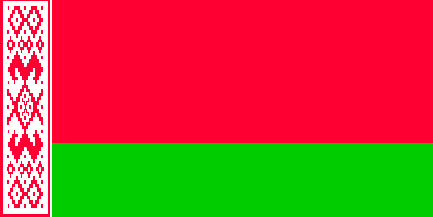 Belarus
Belarus Belgium
Belgium Bosnia and Herzegovina
Bosnia and Herzegovina Bulgaria
Bulgaria Croatia
Croatia Cyprus
Cyprus Czechia
Czechia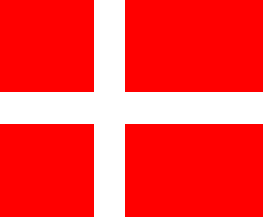 Denmark
Denmark East Germany
East Germany Estonia
Estonia Finland
Finland France
France Georgia
Georgia Germany
Germany Greece
Greece Hungary
Hungary Iceland
Iceland Ireland
Ireland Italy
Italy Lithuania
Lithuania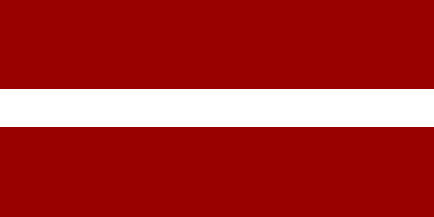 Latvia
Latvia Macedonia
Macedonia Malta
Malta Montenegro
Montenegro NATO
NATO Netherlands
Netherlands Norway
Norway Poland
Poland Portugal
Portugal Romania
Romania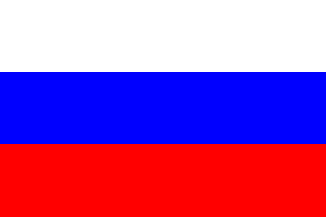 Russian Federation
Russian Federation Serbia
Serbia Slovakia
Slovakia Slovenia
Slovenia Spain
Spain Sweden
Sweden Switzerland
Switzerland Turkey
Turkey Ukraine
Ukraine United Kingdom
United Kingdom
North America
Latin AmericaAsiaMiddle East Bahrain
Bahrain Iran
Iran Iraq
Iraq Israel
Israel Jordan
Jordan Kurdistan
Kurdistan Kuwait
Kuwait Lebanon
Lebanon Oman
Oman Qatar
Qatar Saudi Arabia
Saudi Arabia Syria
Syria United Arab Emirates
United Arab Emirates Yemen
Yemen
OceaniaAfrica Algeria
Algeria Angola
Angola Benin
Benin Botswana
Botswana Burkina Faso
Burkina Faso Burundi
Burundi Cameroon
Cameroon Cape Verde
Cape Verde Central African Republic
Central African Republic Chad
Chad Comores
Comores Congo, Republic of the- (Congo-Brazzaville)
Congo, Republic of the- (Congo-Brazzaville) Djibouti
Djibouti Egypt
Egypt Equatorial Guinea
Equatorial Guinea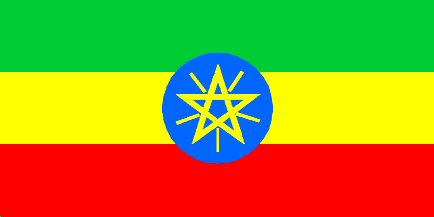 Ethiopia
Ethiopia Eritrea
Eritrea Gabon
Gabon Gambia
Gambia Ghana
Ghana Guinea
Guinea Guinea-Bissau
Guinea-Bissau Côte d'Ivoire
Côte d'Ivoire Kenya
Kenya Lesotho
Lesotho Liberia
Liberia Madagascar
Madagascar Malawi
Malawi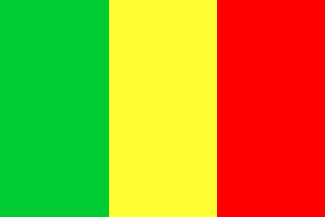 Mali
Mali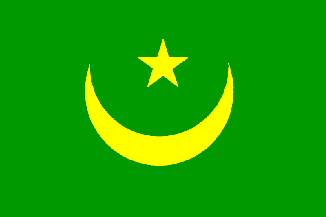 Mauritania
Mauritania Mauritius
Mauritius Morocco
Morocco Mozambique
Mozambique Namibia
Namibia Niger
Niger Nigeria
Nigeria Puntland
Puntland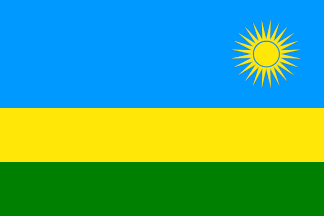 Rwanda
Rwanda Sao Tomé and Principe
Sao Tomé and Principe Senegal
Senegal Seychelles
Seychelles Sierra Leone
Sierra Leone Somalia
Somalia South Africa
South Africa South Sudan
South Sudan Sudan
Sudan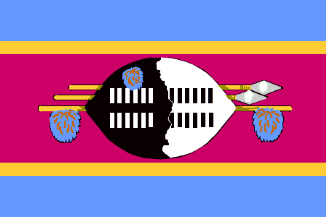 Swaziland
Swaziland Tanzania
Tanzania Togo
Togo Tunisia
Tunisia Uganda
Uganda Zambia
Zambia Zimbabwe
Zimbabwe




























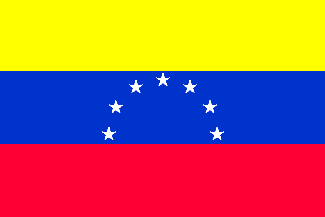








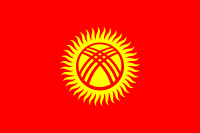

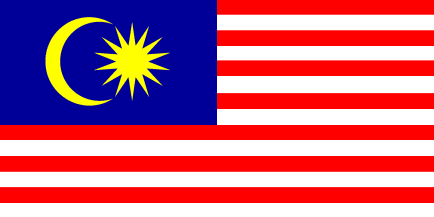


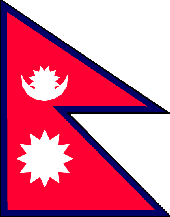






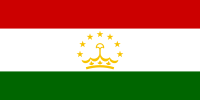






No comments:
Post a Comment